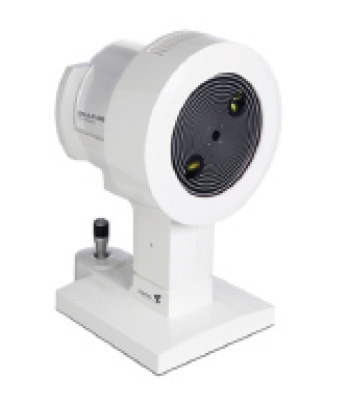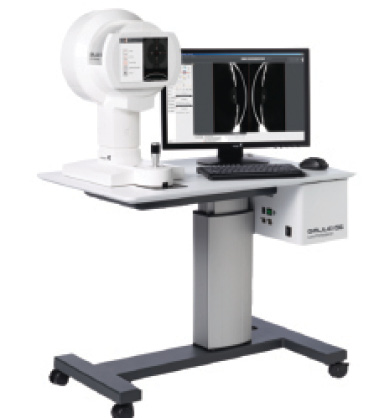The Galilei G6 Lens Professional (Ziemer; Figure 1) combines Placido-disc–based topography, Scheimpflug tomography, and optical biometry all in one unit. This combination allows the device to provide complete data for comprehensive screening for cataract or refractive surgery in one measurement session, according to the manufacturer.1 With all data gathered and stored on one device, the practice’s clinical workflow efficiency can be improved, maintenance costs can be reduced, and office space utilization can be optimized. With access to high-definition pachymetry plus total corneal wavefront, curvature, and astigmatism data, surgeons have a complete dataset to plan cataract or refractive surgery. The addition of optical biometry and a suite of IOL power calculation formulas empowers the cataract surgeon to determine the best-suited IOL for each patient.
According to Ziemer, only the Galilei G6 combines the three elements of Placido-disc–based topography, dual-Scheimpflug tomography, and optical biometry (Figure 2). Placido-disc topography provides data on anterior corneal curvature, surface irregularities, and tear-film quality. Scheimpflug tomography provides corneal pachymetry and elevation data, plus 3-D anterior chamber analysis and ray-tracing capabilities. Optical biometry allows determination of axial length (AL), lens thickness (LT), and other intraocular distances for premium IOL planning.

Figure 1. In one measurement session, the Galilei G6 Lens Professional provides surgeons with a complete dataset for comprehensive screening for cataract and refractive surgery patients
The software of the G6 provides an intuitive graphical user interface including a live view image of the eye and a five-step measurement guide, and the device interfaces with electronic health record systems for optimal workflow. It also links to ray-tracing software packages such as Okulix (Tedics Peric & Jöher), offering precise tools for toric IOL planning by taking into account the true anatomic properties of the eye and total corneal astigmatism.

Figure 2. Placido-disc topography provides data on anterior corneal curvature, surface irregularities, and tear-film quality; Scheimpflug tomography provides corneal pachymetry and elevation data, plus 3-D anterior chamber analysis and ray-tracing capabilities; and optical biometry allows determination of AL, LT, and other intraocular distances for premium IOL planning.
The software generates a biometry report including AL, LT, central corneal thickness, and anterior chamber depth. It also includes an IOL calculator with formulas including Haigis, Holladay I, Hoffer Q, SRK/T, and the Shammas no-history method for eyes after refractive surgery.
The combination of Scheimpflug imaging with optical biometry data makes the Galilei G6 especially helpful for IOL selection in postrefractive surgery eyes, according to Ziemer. Surgeons can use the refractive data from both anterior and posterior corneal surfaces, as generated by Scheimpflug imaging, plus the AL and other intraocular distances as determined by optical biometry, to calculate IOL powers for eyes after corneal refractive surgery. These data are also helpful for IOL calculations in unusually long or short eyes.
In eyes with astigmatism, the combination of high-definition pachymetry, higher-order aberration detection, and total corneal astigmatism measurement allows the surgeon to determine incision placement for cylinder correction in conjunction with cataract surgery.
In addition to its roles in cataract surgery, the device can also perform complete topographic screening of refractive surgery candidates, including keratoconus screening, and it is helpful in planning for corneal implants and in planning and follow-up of keratoplasty patients. n
1. Galilei G6 Lens Professional. Ziemer Ophthalmic Systems AG website. http://galilei.ziemergroup.com/key-features-g6.html. Accessed June 12, 2015.
